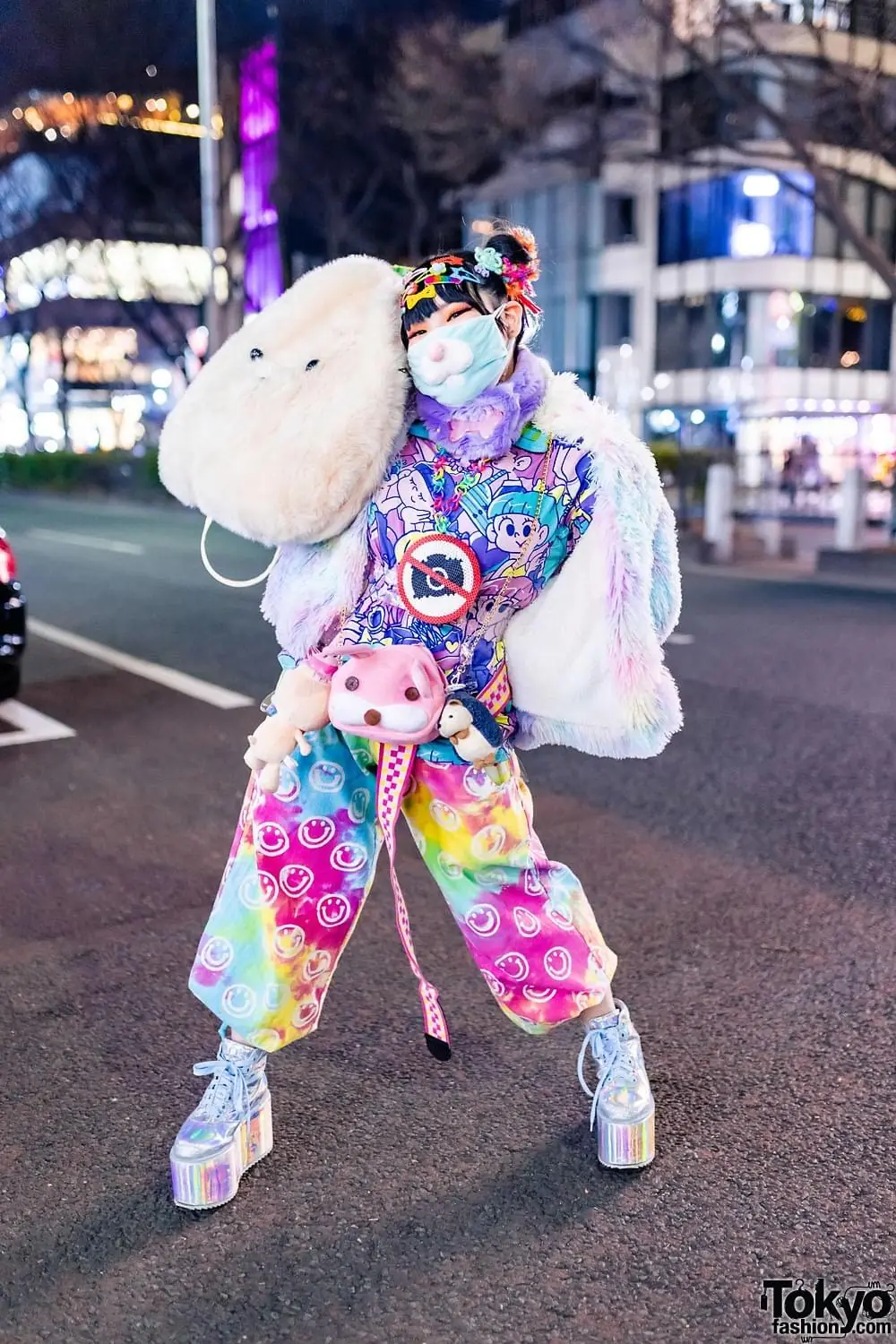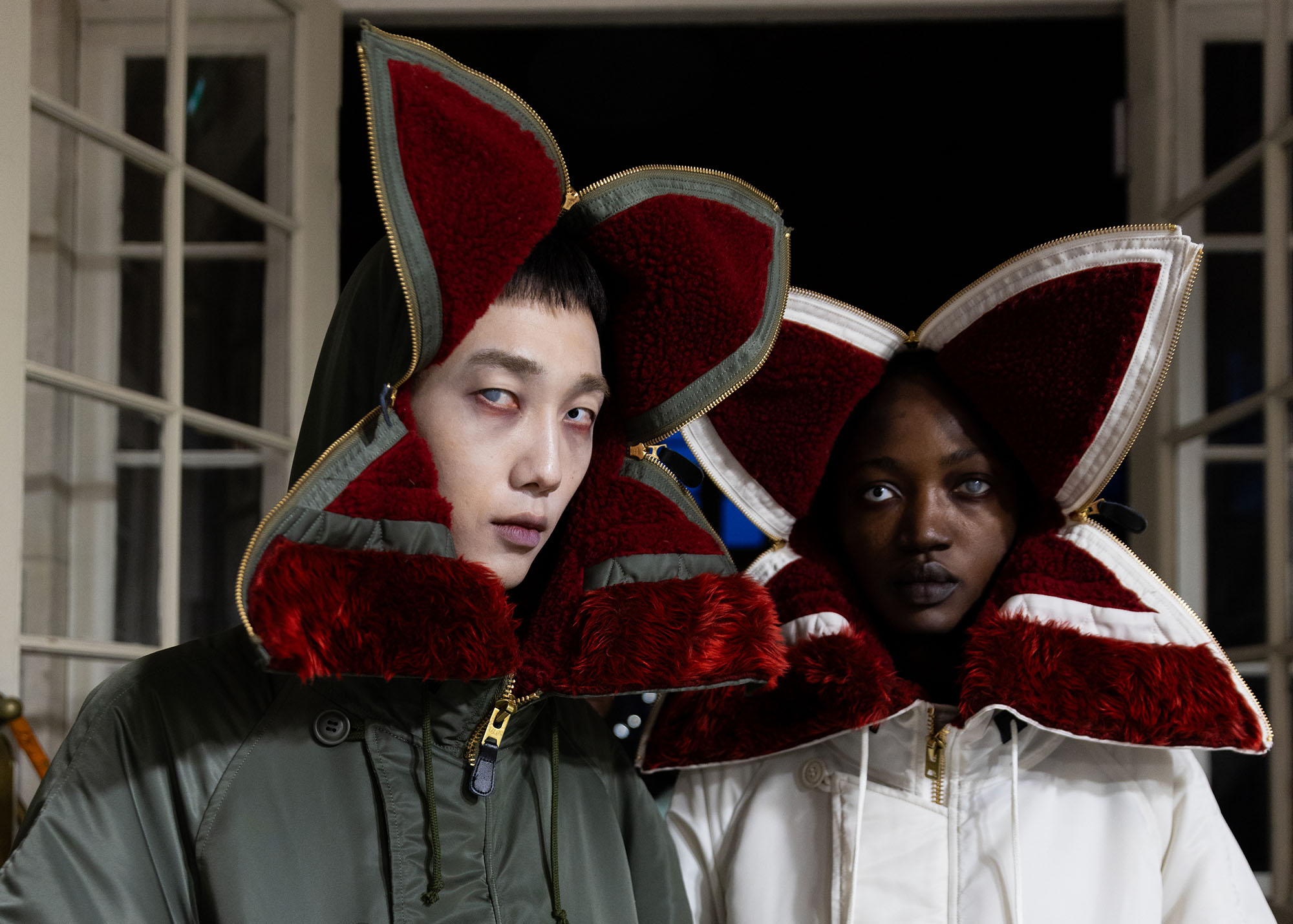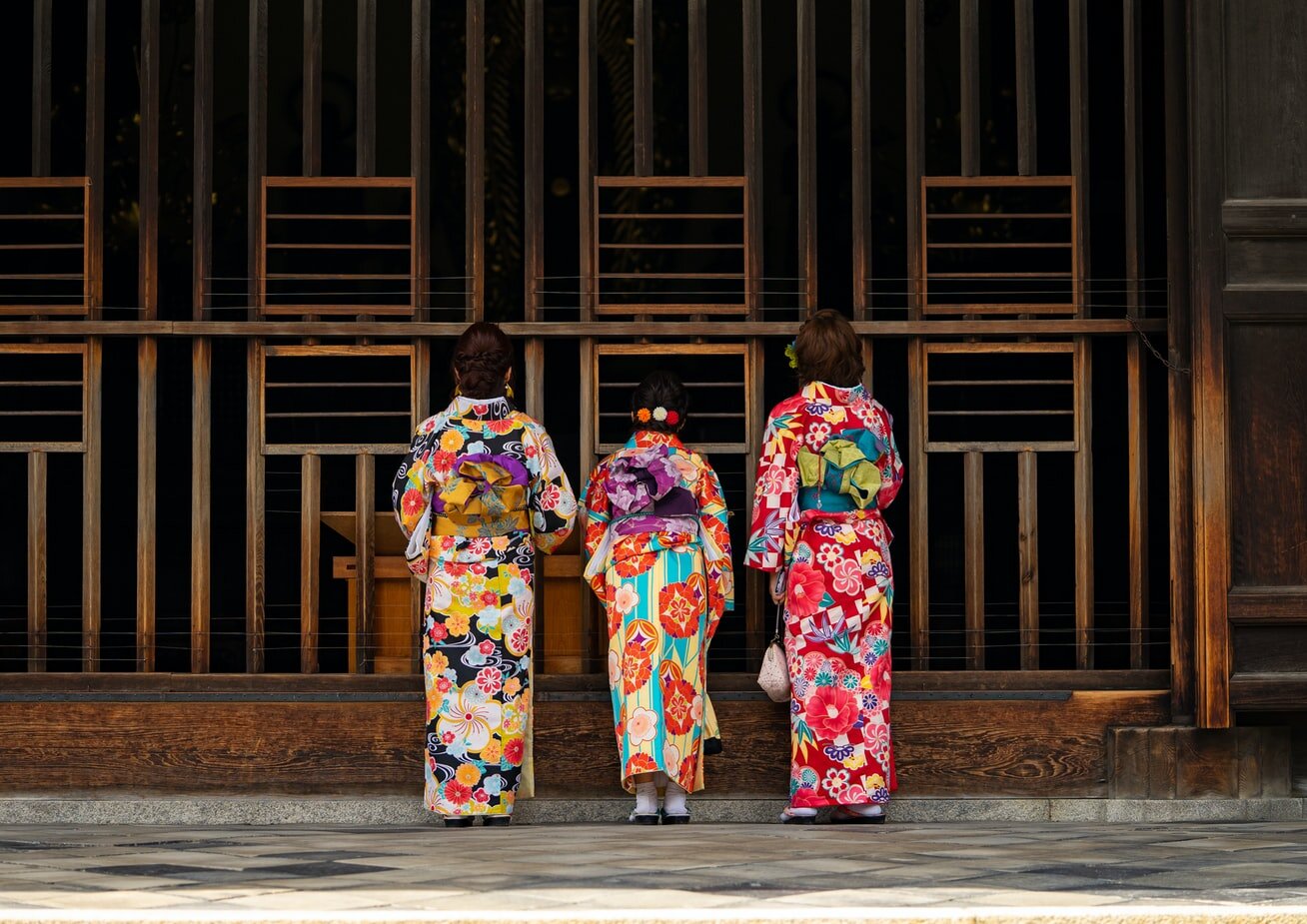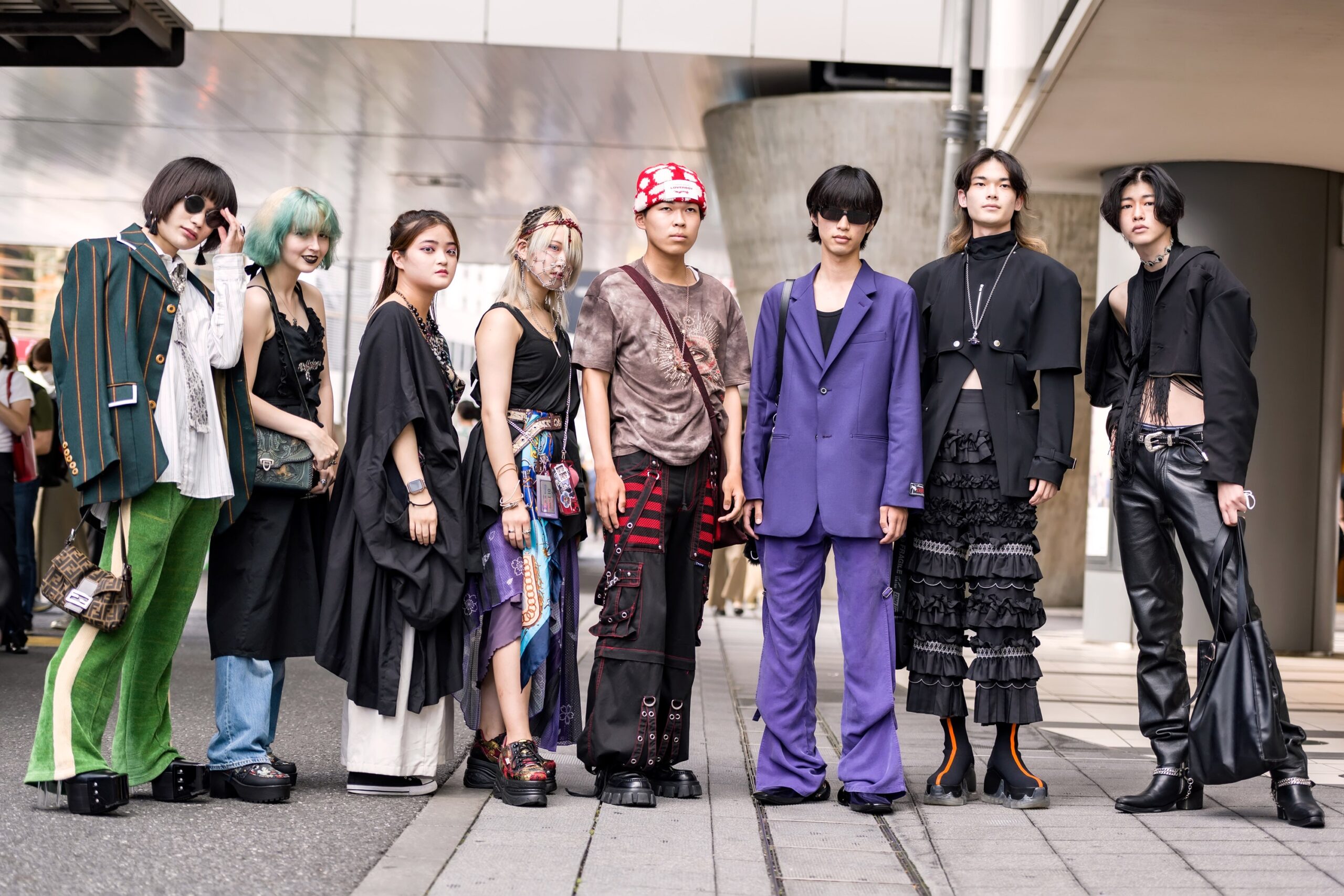Win a Free Trip to Japan!
Experience cherry blossoms and ancient temples
Japanese fashion represents a captivating fusion of historical tradition and contemporary trends. As we venture into 2024, this unique blend reveals how traditional elements continue to influence modern styles. From the intricate designs of kimono to cutting-edge streetwear, Japanese fashion embodies a rich narrative. Moreover, sustainability and innovation are now at the forefront, driving designers to create impactful, eco-conscious garments. This evolving landscape not only showcases the beauty of Japanese fashion but also reflects its role in shaping global aesthetics and youth culture.
Historical Context of Japanese Fashion
Japanese fashion boasts a rich and intricate history that mirrors the country’s cultural evolution. Rooted in tradition, its development showcases a fascinating blend of influences over centuries. Here is a brief overview of significant periods that have shaped Japanese fashion:
- Heian Period (794-1185): This era marked the emergence of the kimono. The aesthetics emphasized elegance and complexity, with layers of colorful silk fabrics.
- Edo Period (1603-1868): Fashion shifted, reflecting social structures. The common classes wore practical clothing, while the nobility flaunted elaborate designs. Ukiyo-e prints from this time often depicted fashion and lifestyles, influencing both local and global perceptions.
- Meiji Period (1868-1912): Western influences surged as Japan opened to the world. Traditional garments began to merge with Western styles, leading to the yukata becoming popular in casual settings and Western-inspired suits among the elite.
- Post-War Era (1945-1960s): The economic boom heralded a new wave of fashion. Designers started to experiment and innovate, bringing Western styles to the forefront while retaining elements of Japanese fashion.
- Contemporary Era (1970s-Present): Today, Japanese fashion stands as a global phenomenon, constantly evolving yet grounded in tradition. Designers like Issey Miyake and Rei Kawakubo have redefined boundaries, creating a dialogue between the past and present.
Understanding this historical context enriches our appreciation for current trends and inspirations within Japanese fashion, showcasing the enduring legacy interwoven with present-day creativity.

Key Elements of Traditional Japanese Garments
Traditional Japanese Fashion is a rich tapestry of history, culture, and craftsmanship. The garments showcase timeless artistry, using specific elements that define their unique aesthetics. Here are some key components:
-
Kimono: This iconic piece serves as the foundation of Japanese attire. The kimono features:
- T-shaped silhouette: This design allows for a comfortable fit, suited for various body types.
- Intricate patterns and colors: These often symbolize seasonal changes or tell a story through their designs.
-
Obi: This decorative sash plays a critical role in kimono attire. Characteristics include:
- Width and length variations: Different styles cater to formality and occasions.
- Knot styles: Each knot holds cultural significance; for instance, a "taiko" knot is often worn for formal events.
-
Hakama: A type of pleated skirt worn over a kimono:
- Different styles: The "andagi" is primarily for men, while women typically wear the "uchikake" style.
- Symbolizes formality: Commonly seen in ceremonies such as graduation and weddings.
- Footwear: Traditional shoes like zori and geta complete the look, offering both comfort and function.
These elements not only reflect Japanese Fashion’s deep-rooted traditions but also serve as a reminder of an era where clothing was intimately connected to culture and identity. As fashion evolves, the essence of these traditional garments still influences contemporary designs, bridging the gap between past and present.
Modern Influences on Japanese Fashion Trends
Japanese fashion continuously evolves, blending traditional aesthetics with contemporary influences. In 2024, several key factors shape current trends:
- Cultural Fusion: The mixing of Western fashion elements with traditional Japanese designs creates a unique visual style. For instance, combining kimono fabrics with modern silhouettes results in garments appealing to both Japanese and global audiences.
- Street Style: Urban youth culture drives many trends, emphasizing individuality and self-expression. Street fashion hubs like Harajuku showcase eccentric ensembles, inspiring designers worldwide. This movement fosters a vibrant scene where Japanese fashion highlights creativity and diversity.
- Technology: Wearable tech and digital fashion experiences revolutionize how fashion is consumed. Innovations such as augmented reality fashion shows or apps that allow users to try on garments virtually enhance engagement and accessibility within the Japanese fashion community.
- Social Media: Platforms like Instagram and TikTok disseminate trends at astonishing speeds. Influencers often set the tone, showcasing Japanese fashion’s fresh takes on traditional wear, making it not only relevant but also aspirational for younger generations.
In summary, modern influences on Japanese fashion highlight a dynamic interplay between tradition and innovation. As the industry navigates these changes, it continues to enchant both local and global audiences, ensuring its place at the forefront of fashion evolution.
Sustainable Practices in Contemporary Japanese Fashion
Sustainable practices in contemporary Japanese fashion have gained momentum as designers increasingly prioritize ethical production and environmental responsibility. This shift represents a blend of traditional values and modern needs, making Japanese fashion a pioneer in sustainability. Here are some key elements driving this trend:
- Use of Natural Materials: Designers favor organic cotton, hemp, and linen, promoting biodegradable and non-toxic fabrics. This choice aligns with Japan’s longstanding appreciation for nature.
- Upcycling and Recycling: Many brands creatively repurpose old garments or fabrics, reducing waste and giving new life to discarded materials. Upcycling also allows for unique, one-of-a-kind pieces.
- Local Sourcing: By sourcing materials locally, Japanese designers reduce their carbon footprint and support local economies. This practice not only benefits the environment but also fosters a sense of community and craftsmanship.
- Slow Fashion Movement: A focus on quality over quantity encourages consumers to invest in timeless pieces rather than fast fashion. This ethos promotes longevity, reducing overall consumption.
Comparisons: Traditional vs. Modern Sustainable Practices
| Aspect | Traditional Japanese Fashion | Contemporary Japanese Fashion |
|---|---|---|
| Materials | Silk, cotton, wool | Organic cotton, hemp, recycled materials |
| Production | Handcrafted | Ethical mass production |
| Consumer Attitude | Preservation of heritage | Focus on sustainability and ethics |
| Design Approach | Timeless designs | Innovative and functional designs |
Through these initiatives, Japanese fashion is paving the way for a more sustainable future, merging tradition with modernity effectively. This commitment to sustainability not only addresses pressing global issues but also reinforces Japan’s position as a leader in the fashion industry.

Notable Japanese Designers Making Waves in 2024
In the dynamic landscape of Japanese Fashion, several designers are standing out by skillfully merging tradition with contemporary style. Their innovative approaches reflect Japan’s rich heritage while resonating globally. Here are a few notable designers making waves in 2024:
- Issey Miyake: Known for his pleating techniques, Miyake continues to redefine modern silhouettes while honoring traditional craftsmanship.
- Yohji Yamamoto: Celebrated for his avant-garde designs, Yamamoto combines streamlined aesthetics with a playful use of fabrics, pushing boundaries in Japanese Fashion.
- Jun Takahashi: The mastermind behind Undercover, Takahashi infuses punk influences into high fashion, creating garments that tell a story.
| Designer | Signature Style | Notable Collection |
|---|---|---|
| Issey Miyake | Pleating, streamlined silhouettes | “A Piece of…” series |
| Yohji Yamamoto | Avant-garde, draped shapes | “Black” collection |
| Jun Takahashi | Punk aesthetics, storytelling | “DARK” collection |
These designers not only celebrate the rich history of Japanese Fashion but also challenge conventions, setting trends that resonate in the global market. Their work inspires a new generation to explore the profound connections between historical and modern influences, ultimately shaping the future of fashion worldwide.
The Role of Street Fashion in Japan’s Culture
Street fashion plays a pivotal role in the cultural landscape of Japan, especially in urban hubs like Tokyo. This dynamic form of expression not only reflects individual styles but also showcases the rich tapestry of Japanese fashion. Here are some key points that illustrate its significance:
- Creativity and Individuality: Street fashion in Japan allows individuals to emphasize their personality. From bold colors to eclectic combinations, it encourages self-expression, making it a vital part of youth culture.
- Trendsetting: Japanese street fashion often sets trends globally. Styles originating from districts such as Harajuku or Shibuya frequently influence fashion capitals worldwide, introducing unique aesthetics that blend traditional elements with contemporary styles.
- Cultural Fusion: Many street fashion enthusiasts integrate traditional garments, like kimonos, into their everyday wear. This fusion exemplifies how Japanese fashion bridges past and present, resonating with both local and international audiences.
- Subcultures: Diverse subcultures like Gyaru, Visual Kei, and Lolita showcase varying aspects of personality and social commentary, illustrating the multifaceted nature of Japanese fashion.
- Community and Connection: Street fashion fosters a sense of belonging among participants. Events, meet-ups, and social media platforms create communities that celebrate fashion while fostering creativity.
In summary, street fashion stands as a testament to Japan’s cultural vibrancy, highlighting the ongoing dialogue between tradition and modernity within Japanese fashion.
Fashion Technology and Innovation in Japan
Japanese fashion continuously evolves by merging traditional aesthetics with cutting-edge technology. As we enter 2024, this synergy becomes increasingly significant in enhancing creativity and sustainability within the industry. Here are some key areas where innovation is shaping Japanese fashion:
- Smart Fabrics: Designers utilize materials embedded with technology, allowing garments to adapt to temperature changes or monitor health metrics. Such advancements not only provide comfort but also improve the functionality of clothing.
- 3D Printing: This technology enables designers to create unique, customized pieces that challenge traditional manufacturing methods. As a result, Japanese fashion embraces personalization like never before.
- Augmented Reality (AR): Retailers in Japan incorporate AR to enhance the shopping experience. Customers can visualize how garments will look on them without trying them on, bridging the gap between physical and digital retail environments.
- Sustainable Practices: Technology also plays a crucial role in promoting eco-friendliness. Innovations such as waterless dyeing processes and the recycling of textile waste contribute to a more sustainable future for Japanese fashion.
Comparison of Traditional vs. Technological Innovations in Japanese Fashion
| Aspect | Traditional Japanese Fashion | Modern Technological Innovations |
|---|---|---|
| Fabric | Natural fibers like silk and cotton | Smart fabrics with embedded technology |
| Production | Handcrafted, often time-consuming | 3D printed and automated processes |
| Shopping Experience | In-person, tactile experience | AR-enhanced, virtual try-ons |
| Sustainability Focus | Limited recycling methods | Advanced recycling and eco-friendly production |
Ultimately, innovations in Japanese fashion not only enhance the allure of traditional styles but also pave the way for a sustainable future, showcasing the remarkable ability to blend the old with the new.

Global Impact of Japanese Fashion Aesthetics
Japanese Fashion has transcended its geographical boundaries, influencing global trends and shaping fashion narratives worldwide. From the meticulous craftsmanship of traditional garments to the vibrant street styles of modern Japan, its aesthetics have left an indelible mark on the global fashion landscape.
Key Influences of Japanese Fashion on Global Trends:
- Minimalism: Japanese designers often emphasize simplicity and functionality, inspiring brands worldwide to adopt a minimalist approach in their collections. This trend celebrates clean lines, neutral colors, and an understated elegance.
- Layering Techniques: The art of layering is prevalent in Japanese Fashion. This technique promotes versatility, allowing wearers to combine different textures and fabrics, influencing how contemporary fashion is designed globally.
- Avant-Garde Designs: Japanese fashion designers are known for their innovative and sometimes unconventional designs. Think of Yohji Yamamoto and Issey Miyake, who challenge traditional notions of silhouette and movement. Their influence encourages a bold embrace of creativity in international fashion houses.
- Street Fashion: Cities like Harajuku have become cultural phenomena, showcasing unique styles that resonate globally. This youth-driven aesthetic challenges norms and promotes self-expression, captivating fashion enthusiasts everywhere.
In summary, the global impact of Japanese Fashion aesthetics is profound and multifaceted. It encourages a dialogue between tradition and innovation, inspiring designers and fashion lovers worldwide to embrace uniqueness and artistry.
Youth Culture and Its Influence on Fashion Choices
Japanese fashion thrives on its rich cultural heritage while embracing the innovative spirit of youth. The unique interplay between youth culture and fashion choices has significantly shaped the landscape of Japanese fashion in contemporary society.
Key Influencers of Youth Fashion in Japan:
- Street Style: The streets of Tokyo, particularly districts like Harajuku and Shibuya, pulse with eclectic styles. Young individuals often blend traditional elements with modern influences, creating bold and expressive looks.
- Subcultures: Various subcultures such as Gyaru, Lolita, and Visual Kei offer a canvas for self-expression and creativity. Each subculture promotes distinctive aesthetics that resonate with different segments of youth.
- Social Media: Platforms like Instagram and TikTok accelerate fashion trends. Young Japanese fashion enthusiasts showcase their interpretations, leading to viral trends that influence Japanese fashion worldwide.
Comparative Trends:
| Traditional Style | Modern Youth Style |
|---|---|
| Kimono and Yukata | Graphic Hoodies and Skirts |
| Obis and Geta | Sneakers and Accessories |
| Bukuro (purses) | Crossbody Bags and Backpacks |
As youth culture continually evolves, it drives the dialogue in Japanese fashion, fusing traditional elements with cutting-edge trends. This dynamic interaction ensures that Japanese fashion remains a vibrant and influential force in the global fashion scene.
Future Directions for Japanese Fashion in a Globalized World
As we delve into the future of Japanese Fashion in a globalized world, several trends are emerging that influence both domestic and international landscapes. Here are key directions shaping the future of this vibrant fashion scene:
- Cultural Fusion: Designers increasingly blend traditional elements with global styles, creating a unique aesthetic that appeals to diverse audiences. This fusion enhances the cultural richness of Japanese fashion while introducing new silhouettes and thematic elements.
- Sustainability Focus: With growing awareness of environmental issues, Japanese fashion is prioritizing sustainable practices. From eco-friendly materials to ethical production methods, brands are aligning with global sustainability goals.
- Technological Integration: Innovations such as 3D printing and smart textiles are revolutionizing design processes. These technologies not only enhance creativity but also facilitate more sustainable production cycles, embodying the intersection of art and science in Japanese Fashion.
- Streetwear’s Evolution: Japan’s iconic street fashion continues to capture global attention, evolving as a platform for self-expression. This trend reflects social movements and the youth’s desire for individuality, driving international collaborations and recognition.
- Digital Transformation: The rise of online retail and social media empowers designers to reach international markets directly. Platforms like Instagram allow for niche brands to gain visibility and establish a global presence, thus reshaping the fashion buying experience.
In summary, the future of Japanese Fashion appears bright and dynamic. By embracing cultural fusion, sustainability, technology, streetwear, and digital strategies, Japan is poised to continue its influential role in the global fashion industry.
Frequently Asked Questions
What are some key elements of traditional Japanese fashion that are still relevant in 2024?
In 2024, traditional Japanese fashion elements such as the kimono, yukata, and hakama remain essential to Japanese cultural identity. The kimono’s intricate designs and craftsmanship showcase the artistry of fabric dyeing and weaving techniques. Meanwhile, the yukata—often worn during summer festivals—has adapted into more casual modern styles, incorporating lightweight materials and contemporary patterns. Many brands are now blending these traditional garments with streetwear aesthetics, reaffirming their timeless appeal in the modern context.
How has modern technology influenced Japanese fashion in 2024?
In 2024, modern technology significantly impacts Japanese fashion through innovations in textile production and design. Advanced materials, such as moisture-wicking fabrics and eco-friendly textiles, are being utilized in clothing lines, enhancing functionality and sustainability. Additionally, fashion tech, including smart wearables and 3D printing, is revolutionizing how garments are designed and produced. Virtual fitting rooms using augmented reality are also becoming commonplace, allowing consumers to explore clothing options from the comfort of their homes, blending convenience with the traditional shopping experience.
What role do cultural festivals play in shaping Japanese fashion trends in 2024?
Cultural festivals in Japan, such as the Gion Matsuri and Aoi Matsuri, significantly influence fashion trends in 2024 by offering a platform for showcasing traditional garments reimagined with a modern twist. These festivals celebrate not just historical costumes, but designers often draw inspiration from festival themes, creating pieces that are both vibrant and reflective of Japan’s rich culture. As younger generations participate, they integrate contemporary styles into traditional attire, encouraging a fusion that keeps the cultural essence alive while appealing to modern tastes.
Are there any prominent Japanese fashion designers or brands to watch in 2024?
In 2024, several Japanese fashion designers and brands are making significant waves on the global fashion scene. Issey Miyake continues to be revered for his innovative pleating techniques and sustainable practices. Meanwhile, designers like Junya Watanabe and Rei Kawakubo of Comme des Garçons are recognized for their avant-garde approaches that challenge conventional fashion norms. Additionally, emerging brands focused on sustainability, such as Hender Scheme, are gaining attention for their unique blend of craftsmanship and modern design philosophies, making them essential to watch.
What are the sustainable practices being adopted in Japanese fashion as of 2024?
In 2024, sustainability is at the forefront of Japanese fashion, with many brands adopting eco-friendly practices. This includes using organic materials, reducing water consumption during production, and endorsing ethical labor practices. Designers are increasingly repurposing old garments, creating upcycled collections that speak to the growing eco-conscious consumer base. Moreover, initiatives promoting local craftsmanship not only support traditional textile artisans but also reduce carbon footprints associated with shipping. This holistic approach to fashion sustainability is setting important benchmarks for the industry worldwide.
